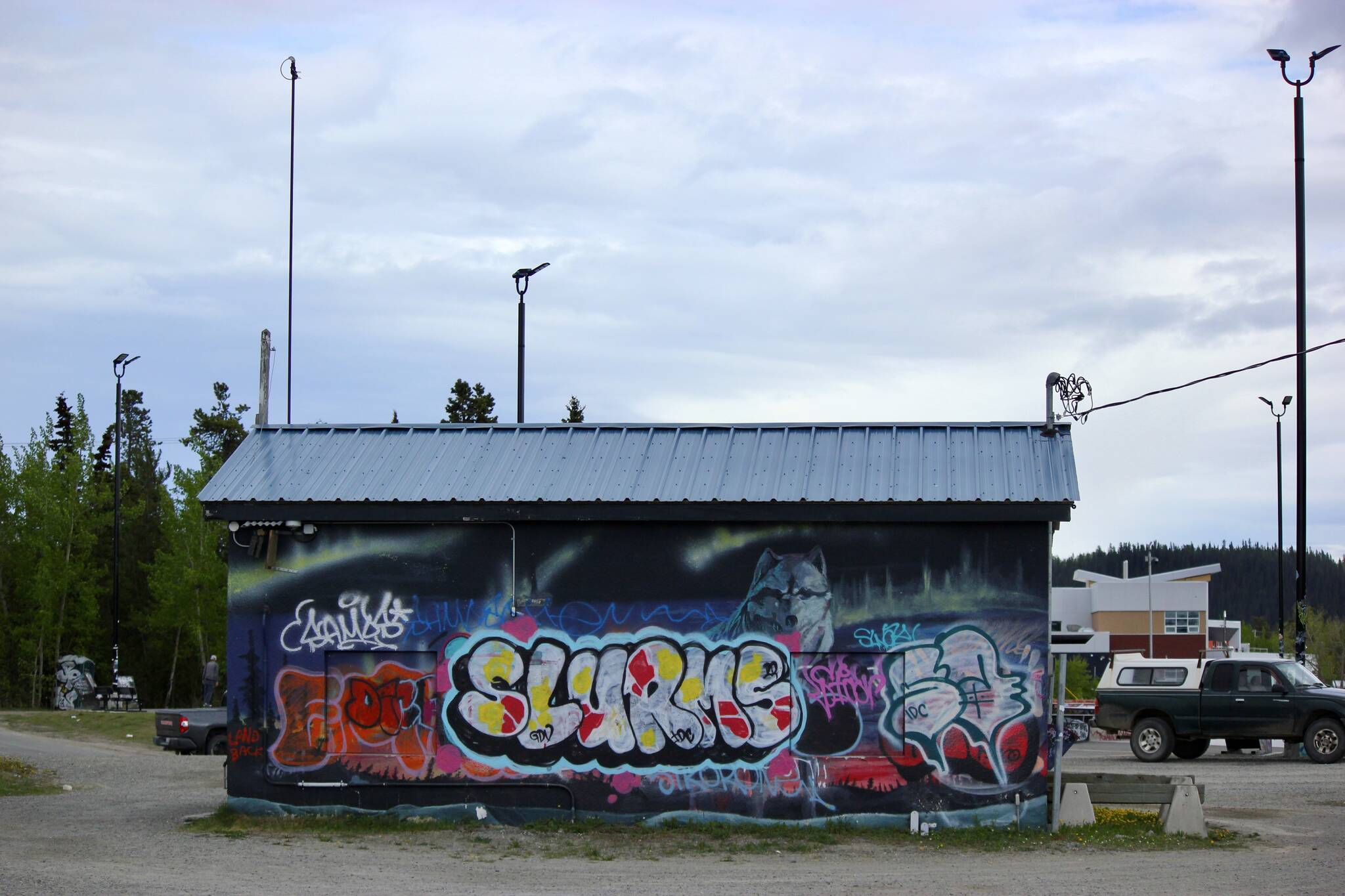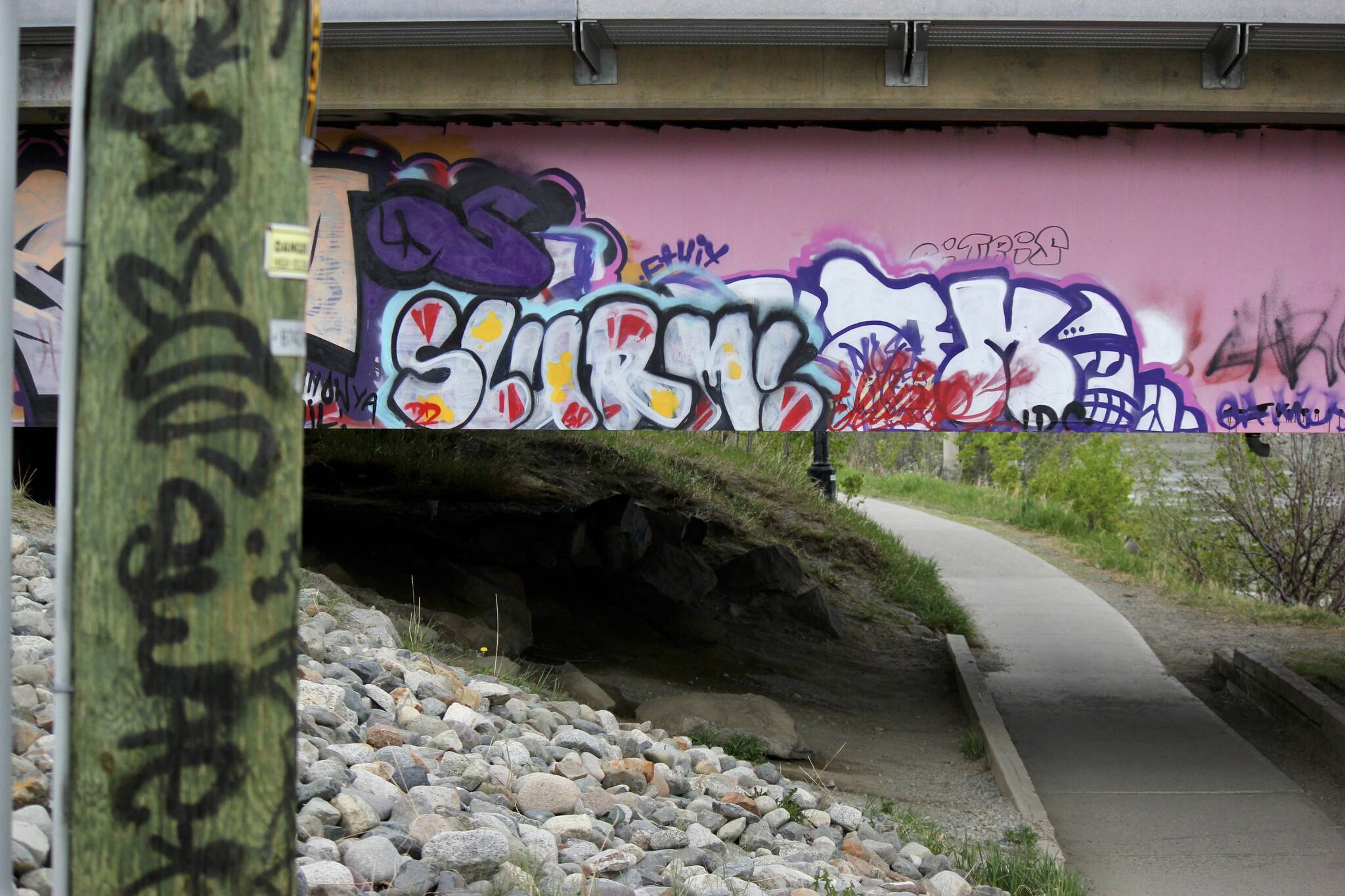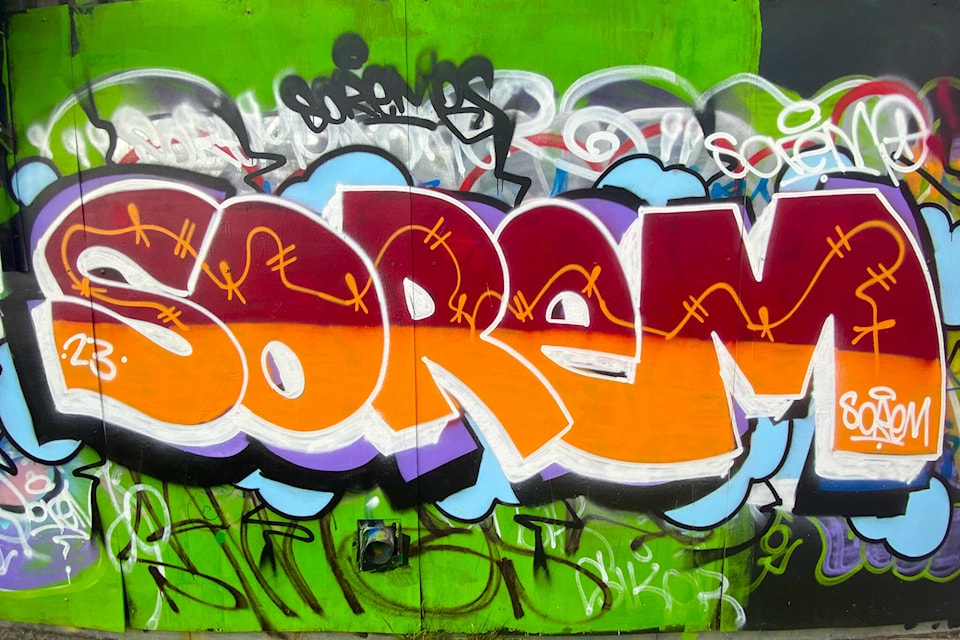Go for a short walk around downtown Whitehorse and it only takes a few steps before you see graffiti. Spray painted tags are scribbled on every surface from buildings to lampposts to bus stops. Many tune out the common sight in urban areas but if you look closely, one name is everywhere — Slurms.
Rylie Rosychuk, 14, credits Slurms as one of his inspirations for picking up the can.

“Slurms is really popular. I was like, ‘I want to be like that guy’,” Rosychuk told the News. “I saw his pieces under the bridge and throughout town and it was really cool. I was like ‘I want to try and do this’.”
That was just before the pandemic. Now, Rosychuk, who uses the pseudonym Sorem, is immersed in the local graffiti scene.
“There’s a lot of new writers like Samos,” he said. “The culture is growing. A lot of people have started doing it and they’re coming together. It’s pretty cool.”
As Rosychuk explains, a writer is someone who does graffiti illegally. He says that’s different from an artist — someone who does lawful and commissioned work. Rosychuk keeps it clean and legal. One of his go to spots is a wall at the Heart of Riverdale, where he takes an arts class.
“They have a lot of spray paint that I can use,” he said.
Rosychuk could soon have more places to do his art. Recently, the City of Whitehorse accepted $37,940 from the Crime Prevention and Victim Services Trust Fund for a graffiti management program. The program will include a legal art initiative that would see artists commissioned to create art in approved locations.
The initiative was first announced at a council meeting earlier this month. A presentation was given to city council on amendments to the graffiti management policy. During the presentation, parks and community development manager Melodie Simard said graffiti is all over private and public properties, most notably on garbage cans, street signs and playgrounds.
“Reducing or eliminating graffiti is one way to enhance the downtown core and to increase quality of life,” Simard said.
While a legal art program is welcome news for some like Rosychuk, for others, the thrill of breaking the law is part of graffiti culture.
“Graffiti means different things for different people,” said Rosychuk. “Some might write at the legal spots. That’s pretty cool, it’s a chill spot, but if they want to get up and they want their name to be really known downtown or there’s a spot they want to hit, then that’s where they’re going to go.”

Illegal graffiti doesn’t bother everyone. One Whitehorse resident walking under the Robert Campbell bridge, a popular tagging spot, told the News he doesn’t mind it, as long as it’s not offensive and doesn’t target business owners.
“Graffiti is likable so long as it is jolly, pleasant, has vibrant colors, and does not invoke violence or negative sentiment,” said the local man. “The one issue I have is lettering. You never can read what the message is actually saying.”
While there will always be those that graffiti illegally, Rosychuk believes if there were more legal spots, the community would use them.
Via Instagram, the News reached out to Slurms, whose work is often seen in illegal spots, but did not receive a reply.
“Slurms doesn’t really like talking to people. I haven’t even met him yet,” said Rosychuk. “I think a bunch of skaters got to meet him once when he did a piece at the skatepark.”
According to Simard’s presentation to council, “over the course of summer 2023, the city will accelerate its efforts to clean up graffiti.”
While the city is busy doing that, Rosychuk is practising his lettering. He hopes to improve his work and expand into doing murals.
Dylan MacNeil is a freelance writer based in Whitehorse.
